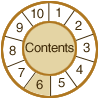

6B.
Technical Infrastructure:
IMAGE CREATION
Key Concepts
introduction
how scanners
work
scanner types
image processing
INTRODUCTION
A dazzling array of devices that start the digitization chain now beckon
the prospective digital imaging initiative. Note: We use the term
scanner to refer to all image capture devices, including digital cameras.
Ask some key questions about any scanner you might consider.
Scanner specifications can be difficult to interpret and often lack standardization, making meaningful comparisons impossible. The RLG/DLF guide, Selecting a Scanner examines scanner specifications related to image quality and can help the reader see past the marketing hype that is commonplace in the industry.
As you read through the details of available scanners, keep in mind that most scanners were designed for large markets such as the business and graphic arts segments. Few were designed to accommodate the specific needs of libraries and archives. Your goal will be to find one that best fits your needs with the fewest compromises.
© 2000-2003 Cornell University Library/Research Department